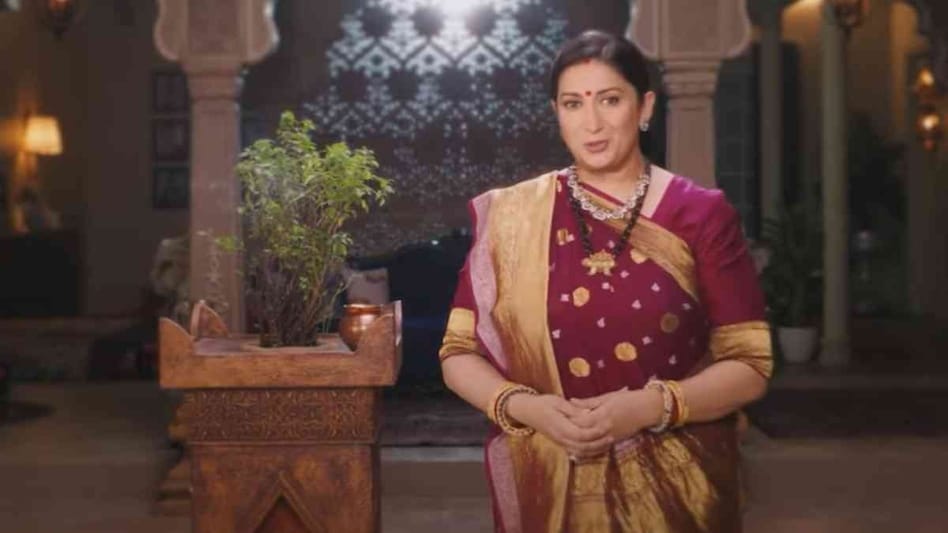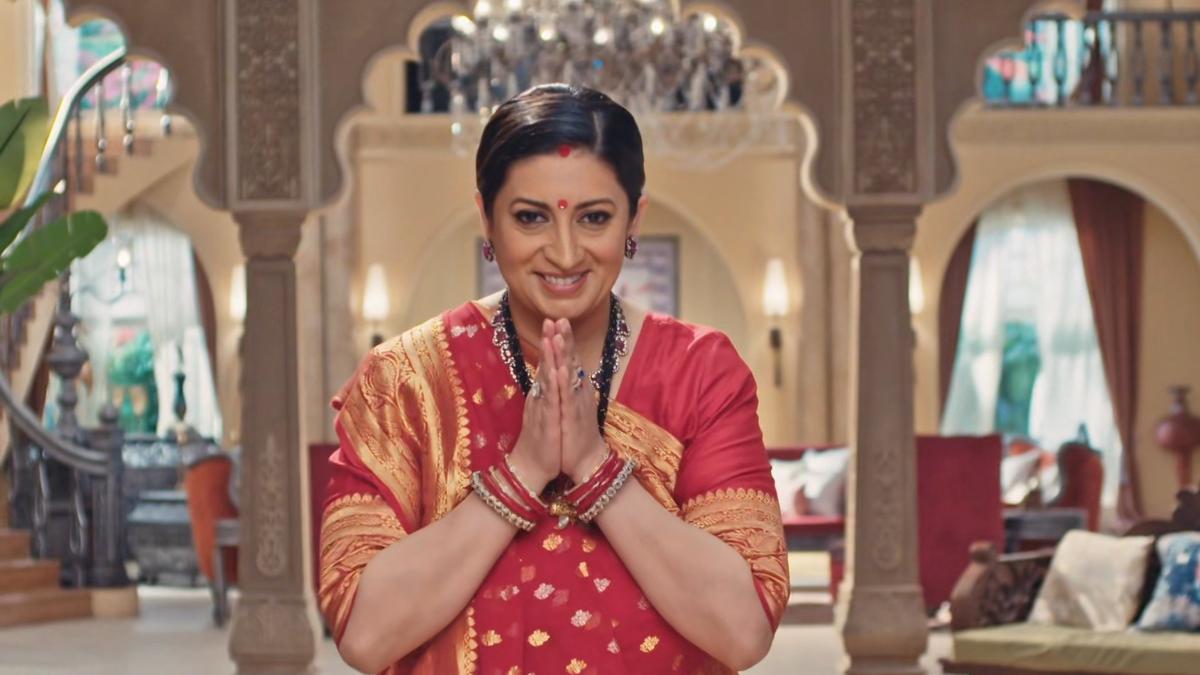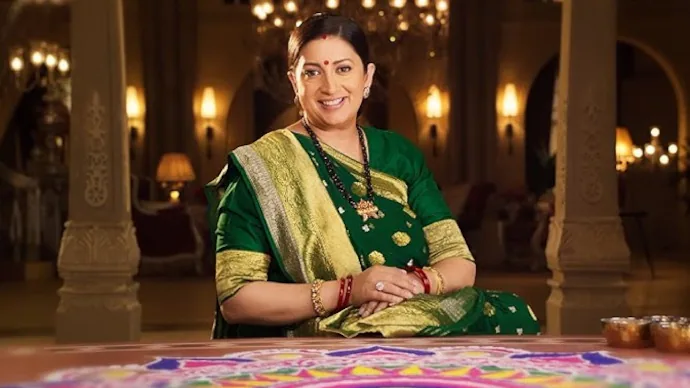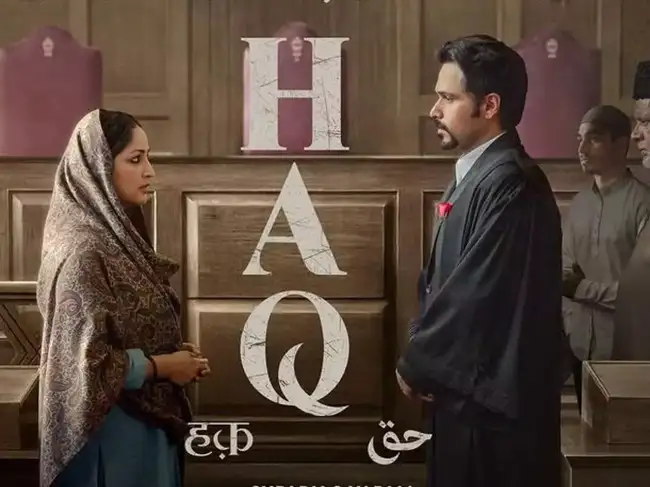When Ekta Kapoor first became a household name in the early 2000s, she was hailed as the “Content Czarina” of Indian television. A young woman making it big in India’s male-dominated television industry, Kapoor redefined the daily soap for Indian millennials, earning praise for elevating female and ‘feminine’ narratives, although inherently stereotypical and regressive, and transforming prime-time television in the 2000s into a so-called ‘women’s domain’, with homemakers—long ignored by the industry—suddenly seen as a prized audience.
While her ascent may have looked like a triumph of women-orientated representation, there’s a paradox at the heart of this story: rather than challenging patriarchy, Kapoor’s empire of soap operas mass-produced it in glittering, bingeable packages, making submission aspirational.

Kapoor’s meteoric rise is inseparable from the cultural juggernaut of Kyunki Saas Bhi Kabhi Bahu Thi and its many cousins, sprawling domestic sagas with endless episodes, idealised heroines, cartoonishly one-dimensional villains, and carefully calibrated moral spectacles, engineered to maximise ratings by flattering the status quo.
Patriarchy as a safe investment
Kapoor’s gendered portrayal and caricatured representations may feel stale in 2020’s India, but it’s financially bulletproof. In a society steeped in patriarchy, selling it as entertainment is the safest bet because it neither alienates advertisers nor risks mass backlash. Instead, by wrapping hierarchy and obedience in emotional monologues, the shows deliver a comforting reflection of what audiences already know. In short, the formula works because it’s low-risk. Naturally, then, two decades on, as Kyunki 2.0 returns to Indian television again, the script remains the same; the only difference is that patriarchy is being peddled to Indian audiences in sharper focus and richer colour.
In Kapoor’s universe, capitalism and patriarchy go hand in hand, feeding off each other whenever the opportunity arises. As such, patriarchal values become both the content and the sales pitch, with the shows functioning as endless advertisements for the ‘virtues’ of obedience, sacrifice, and female self-effacement.
In Kapoor’s universe, capitalism and patriarchy go hand in hand, feeding off each other whenever the opportunity arises. As such, patriarchal values become both the content and the sales pitch, with the shows functioning as endless advertisements for the ‘virtues’ of obedience, sacrifice, and female self-effacement. From a market perspective, this is genius. The product works at two levels: offering escapist spectacle through the glamour and wealth of the fictional households while reinforcing the very hierarchies that keep much of the audience economically and socially dependent. The viewers are sold both fantasy and conformity and taught that one is the price of the other.
When Kyunki Saas Bhi Kabhi Bahu Thi premiered in 2000, Tulsi, the show’s “matriarch-in-training”, quickly became the national archetype of the ideal Indian woman. Draped in heavy silks, vermilion glowing like a badge of virtue, and scriptures at the tip of her tongue, her moral compass never wavered. Ever aligned with preserving patriarchal values, the trials and tribulations in Tulsi’s fictional life invited women viewers—many of whom were homemakers themselves—to see service and self-erasure as noble and desirable and remain bound by maryada (loosely ‘propriety’, but in practice, a euphemism for ‘know your place’).

The ideal bahu, then, is an endurance athlete in the marathon of self-sacrifice, accepting humiliation as destiny and forgiveness as virtue. The characterisation of the shows’ ‘vamps’, too, serves to reinforce the same moral order: women who defy tradition by pursuing romance outside marriage, rejecting rituals, and prioritising careers are framed as treacherous or doomed, unless, of course, they learn the error of their ways and submit to patriarchal norms.
Girlboss branding, anti-feminism core
This is where Kapoor’s career collides with critiques of girlboss feminism—the 2010s corporate-friendly brand of women’s empowerment that celebrated individual female success stories while ignoring structural inequality. The girlboss archetype thrives on the optics of a woman at the top, which is meant to be interpreted as a win for feminism, even if her ascent depends on keeping the system (read: patriarchy) intact for everyone else.
When Kyunki Saas Bhi Kabhi Bahu Thi premiered in 2000, Tulsi, the show’s “matriarch-in-training”, quickly became the national archetype of the ideal Indian woman. Draped in heavy silks, vermilion glowing like a badge of virtue, and scriptures at the tip of her tongue, her moral compass never wavered.
Kapoor’s public image has been managed in this mould. Her success story is deployed as evidence of progress, masking the fact that the substance of her work often entrenches the very hierarchies feminism seeks to dismantle. Interviews emphasise her role as a pioneering female producer, her entrepreneurial grit, and her knack for understanding ‘what women want’. But the women in her shows rarely want liberation—largely because they’re never truly empowered to know what they want.

So, while capitalism rewards Kapoor for selling patriarchy, her gender makes the sale look modern. The most commercially successful female characters in her portfolio bridge generational divides, restore family honour, and heal rifts without challenging the patriarchal foundations that caused those rifts in the first place. In other words, the kind of feminism on display in her shows—if it qualifies as feminism at all—is ‘safe’, in the sense that it champions personal strength without structural change and agency without autonomy. But to single Kapoor out as a lone villain ignores that the television industry she conquered is built to monetise inequality, with audiences helping sustain it, and household brands and corporate sponsors becoming silent co-authors of the scripts.
Women who defy tradition by pursuing romance outside marriage, rejecting rituals, and prioritising careers are framed as treacherous or doomed, unless, of course, they learn the error of their ways and submit to patriarchal norms.
This doesn’t absolve viewers, though, but it does complicate the idea of ‘choice’. The audiences’ preferences are shaped by decades of saturation messaging that defines morality in patriarchal terms. As such, if one’s media diet is dominated by a single genre that rewards obedience and vilifies autonomy, ‘choosing’ such narratives becomes less about free will and more about conditioned familiarity. The long-form serial format is also designed to allow for deep emotional conditioning. In time, the shows become social scripts, teaching what is acceptable and what is deviant. Characters like Tulsi gradually become daily companions in the viewer’s life. So, when her virtues are repeated, tested, and reaffirmed over hundreds of episodes, they start to feel like common sense. That common sense, of course, is a patriarchal script that capitalism is more than happy to underwrite.
Tradition in HD in 2020s India
The return of Kyunki in 2025, in an age of progressive web series and global streaming content, serves as a message that the old order is intact, roles and hierarchies remain unshaken, and women’s narrative centrality is still conditional on service to family honour. Kyunki 2.0 lands in a conservative political climate where state-endorsed culture emphasises family values, gender hierarchies, and preserving tradition. Its timing mirrors the rise of the ‘tradwife’ aesthetic online—hyper-feminine domesticity reframed as empowerment—a script Kapoor herself perfected decades ago.
At its core, then, the show is little more than a re-broadcast of an ideological framework that trains women to see self-erasure as noble. It’s a prime-time reassertion of a worldview where obedience is aspirational and domesticity is destiny.
‘In an era where the Indian state is actively promoting religious and cultural regression, Kyunki… mirrors the state’s vision of disciplined Hindu womanhood,’ notes an article in The Quint, adding, ‘The Virani household is a microcosm of a ‘perfect’ nation, where obedience and reverence are the cornerstones of a functioning society. This drills in the idea that true happiness and stability are found in conforming to tradition, not in challenging it.’
The blame doesn’t lie with a single entity, though, but with the convergence of market forces, political climate, and cultural conservatism—a triangle in which the Ekta Kapoors of the world are both entrepreneurs and functionaries.
Rebranding patriarchy isn’t progress.
The Kapoor case study underscores the broader truth that women’s advancement within patriarchal capitalism does not guarantee feminist outcomes. Representation at the top matters, but when it comes without a commitment to challenging structural oppression, it risks propagating the very systems it appears to disrupt. The glass ceiling may be shattered, but if the floor plan remains intact, the view doesn’t change. The girlboss can succeed spectacularly, but in doing so, makes the architecture of inequality more glamorous, more watchable, and more resistant to critique. Women-centric stories aren’t inherently empowering until they centre autonomy, complexity, and self-determination, rather than martyrdom and domestic virtue.
With diverse content flourishing online, the need is for creators willing to risk discomfort and depict women as flawed, demanding, and wanting more than home and sacrifice. Until such narratives become mainstream, Kapoor’s legacy will stand less as a milestone of representation and more as a cautionary tale about how easily capitalism can dress up old hierarchies in new clothes and how readily audiences will applaud the costume change. And while Kapoor may not be the architect of patriarchy, she has certainly proven herself a luxury developer within it.
About the author(s)
DevRupa Rakshit is an independent journalist and communications professional at work, and a storyteller and artivist at heart. She's autistic, ADHD, and lives with cats!






Gone are the days where the representation of women in media scape were prominent and carried a convincing signifier as a whole. The 80’s, 90’s were the watershed period evincing the testament of powerful women character who carved a strong marker in the discursive ecology of socio- cultural and political spaces ( arohan, rajani, kalkothri, Udaan, Jeevanrekha and etc). Even though Ekta Kapoor galvanized the television industry by bringing the standpoint of feminism and women but largely they are regressive, benighted and psychologically vitiating. Majority of her television shows revolves around the normative orbit of kitchen politics, endless domestic discordance, and countless extra marital affair. It does redefine the patriarchal and the toxic musculature which does not overhaul the representation of women in any positive mannerism. If her contribution has revolutionized the television industry from the gendered lens, we cannot negate this truth either that she has also recreated the paradoxical archetype of stereotypical toxicity.